Snake tattoos, like the sinuous creatures they depict, have a mesmerizing allure that extends beyond their aesthetic beauty. These tattoos possess the power to captivate and intrigue, drawing on centuries of symbolism and cultural significance. As a symbol of transformation, cunning, and rebirth, snake tattoos serve as potent reminders of the ever-changing nature of life and the wisdom gained through personal evolution. The choice of a snake tattoo transcends mere body art; it becomes a testament to the wearer’s beliefs, experiences, and journey towards self-discovery. Each inked serpent, whether intricately detailed or elegantly minimalistic, tells a unique story, making snake tattoos an enduring and cherished form of self-expression.

Tattoos have long been a medium for individuals to express their identity, beliefs, and personal stories. Among the myriad of tattoo designs, the snake tattoo holds a unique place, carrying a rich history and symbolism that spans cultures and eras. This art form transcends the mere aesthetic, delving into the realms of mythology, spirituality, and personal narratives. In this comprehensive exploration, we will delve into the world of snake tattoos, dissecting their historical significance, cultural context, symbolism, artistic evolution, and contemporary relevance.
A Brief History of Snake Tattoos
Snake tattoos hold a rich history spanning cultures worldwide. In ancient civilizations like Egypt, snakes symbolized wisdom, rebirth, and protection, often associated with deities like Isis. In Japan, they represented strength and good luck, depicted in intricate designs like the traditional irezumi. European folklore tied serpents to temptation and sin, influenced by biblical narratives. However, in modern tattoo culture, snakes often signify transformation, shedding skin as a metaphor for personal growth. Artists utilize diverse styles, from realistic to neo-traditional, to depict these creatures, ensuring their enduring popularity as powerful symbols embodying both danger and beauty in the world of body art.

1.1 Origins of Tattooing Tattooing has been practiced for millennia across various cultures. Its origins are often traced back to ancient civilizations such as the Egyptians, Greeks, and Polynesians, who used tattoos for a multitude of purposes, including religious rites, identification, and tribal affiliations.
1.2 The Snake as an Early Symbol The snake, being a universal symbol, found its way into the earliest forms of body art. In ancient Egypt, snakes were associated with divine protection and rebirth. Similarly, in Greek mythology, the serpent was tied to the god of medicine, Asclepius, symbolizing healing and transformation.
1.3 Cultural Variations Snake tattoos evolved differently in various cultures. In Japan, the snake (or Hebi) represents protection against illness and bad luck. In Native American tribes, serpents symbolize transformation and healing. Meanwhile, in Aztec culture, the Feathered Serpent, Quetzalcoatl, was a deity embodying wisdom and the cycles of life.

Symbolism of the Snake Tattoo

2.1 Dual Nature of Snakes Snakes are complex creatures, often embodying both positive and negative attributes. As a tattoo symbol, they can represent duality – the balance between good and evil, life and death, creation and destruction.
2.2 Transformation and Rebirth One of the most prevalent themes in snake tattoos is transformation. Shedding their skin, snakes are seen as creatures of rebirth and renewal. This symbolism resonates with many individuals who choose snake tattoos as a reminder of personal growth and transformation in their lives.
2.3 Wisdom and Cunning Snakes are often depicted as intelligent and cunning creatures. In this context, a snake tattoo can represent wisdom, cleverness,
and the ability to navigate life’s challenges with skill and agility. People who admire these qualities may opt for a snake tattoo to symbolize their own intellect and strategic thinking.
2.4 Fear and Danger On the flip side, the snake’s venomous nature and its association with danger and fear have also contributed to its symbolism. Some individuals choose snake tattoos to convey a sense of power, mystery, or a warning to others not to underestimate them.
2.5 Balance and Harmony In some Eastern philosophies, the snake is linked to the concept of balance and harmony. The yin-yang symbol, for example, often incorporates a snake to represent the balance of opposites in the universe. Those seeking equilibrium and unity may opt for a snake tattoo to reflect these ideals.

Artistry of the Snake Tattoo

3.1 Design Elements Snake tattoos can take on various design elements, from highly detailed and realistic depictions to more abstract and stylized forms. The choice of design elements, such as the snake’s posture, color, and background, plays a significant role in conveying the intended symbolism and aesthetics of the tattoo.
3.2 Popular Styles Snake tattoos are found in a range of tattoo styles, including:
- Traditional: Characterized by bold lines and bright colors, traditional snake tattoos often feature a coiled serpent with its tongue flicking out.
- Realistic: Realistic snake tattoos aim to capture the intricate details of a snake’s scales and texture, creating a lifelike representation.
- Black and Grey: These tattoos rely on shades of black and grey to create depth and dimension, often emphasizing the snake’s graceful form.
- Neo-Traditional: Neo-traditional snake tattoos blend elements of traditional and contemporary tattoo styles, incorporating vibrant colors and creative designs.
- Minimalist: Minimalist snake tattoos focus on simplicity and often feature a single, elegant line depicting the snake’s form.
3.3 Placement The placement of a snake tattoo can also significantly impact its visual impact and personal significance. Common locations for snake tattoos include the forearm, thigh, chest, and back. The choice of placement often reflects the wearer’s desire for visibility or personal meaning.

Cultural Significance of Snake Tattoos

4.1 Asia In Asia, snake tattoos hold diverse meanings. In Chinese culture, the snake is associated with wealth and prosperity, while in Japan, it signifies protection and good luck. Many Asian martial artists incorporate snake tattoos to symbolize agility and strength.
4.2 Native American Tribes Among Native American tribes, the snake often represents transformation and healing. It is seen as a guardian spirit that guides individuals through life’s challenges, helping them shed their old selves and emerge stronger.
4.3 Ancient Egypt In ancient Egypt, the snake symbolized protection and divine energy. It was closely associated with the goddesses Wadjet and Meretseger, both of whom were protective deities.
4.4 Aztec Culture In Aztec culture, the Feathered Serpent, Quetzalcoatl, was revered as a deity symbolizing knowledge, creation, and order. Snake tattoos in this context may be chosen to honor these ideals.
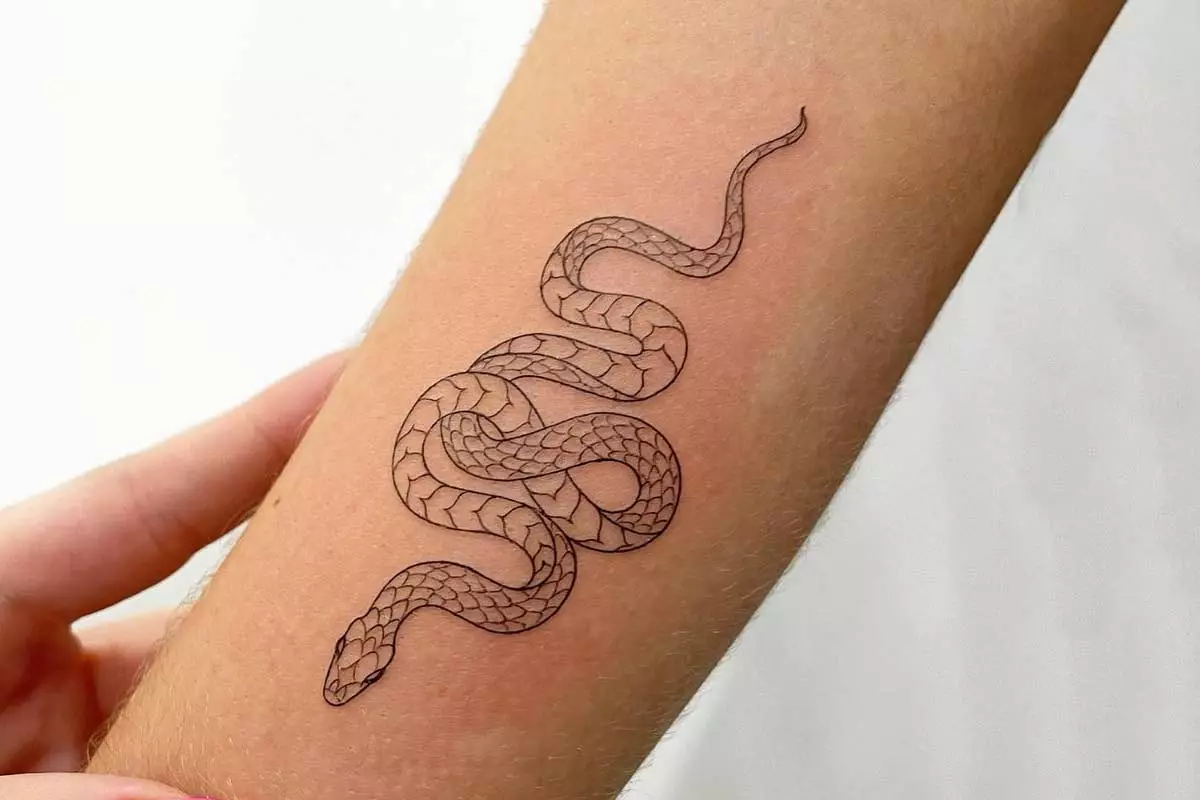
The Evolution of Snake Tattoos
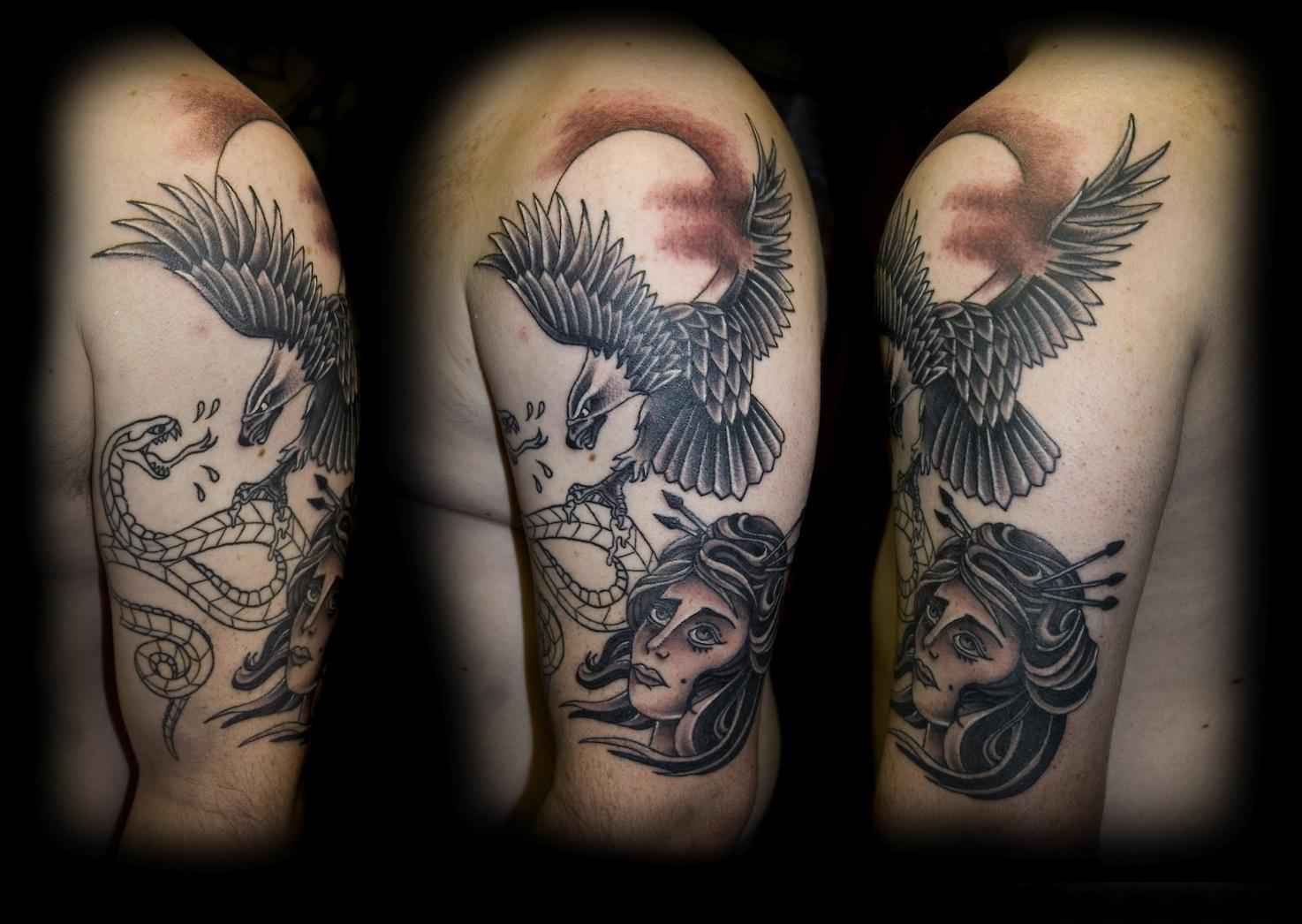
5.1 Traditional to Modern Snake tattoos have evolved significantly over time, reflecting changes in tattooing techniques and styles. While traditional Serpent tattoos were characterized by bold outlines and limited color palettes, modern tattoo artists have pushed the boundaries of creativity and design.
5.2 Fusion with Other Symbols Contemporary Serpent tattoos often incorporate other symbols and elements to convey more complex meanings. For example, a snake entwined around a dagger may symbolize courage and protection, while a snake and rose combination can represent love and transformation.
5.3 Personalization and Customization One of the most remarkable aspects of Serpent tattoos is their adaptability to personal narratives. Many individuals choose to customize their snake tattoos by incorporating names, dates, or meaningful quotes, making the tattoo a deeply personal and unique expression of their experiences and beliefs.
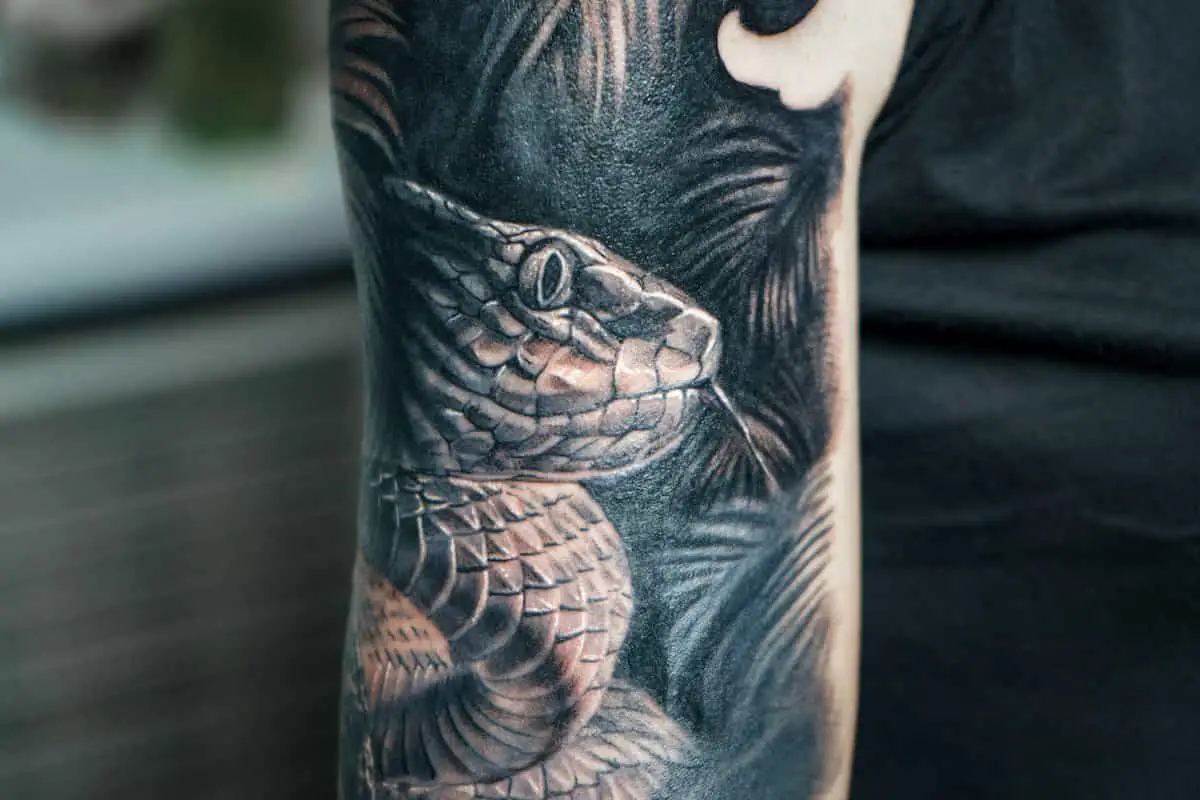
Contemporary Relevance of Snake Tattoos

6.1 Pop Culture Snake tattoos continue to be popular in contemporary culture, partly due to their appearances in various forms of media. Celebrities, musicians, and athletes have often sported snake tattoos, contributing to their enduring popularity.
6.2 Empowerment and Self-Expression For many people, snake tattoos symbolize empowerment and self-expression. They serve as a reminder of their ability to overcome obstacles, embrace change, and harness the strength and wisdom within themselves.
6.3 Tattoo as Therapy In recent years, tattoos, including snake tattoos, have been embraced as a form of therapy and self-healing. Some individuals use tattoos to reclaim their bodies and commemorate personal triumphs over adversity.
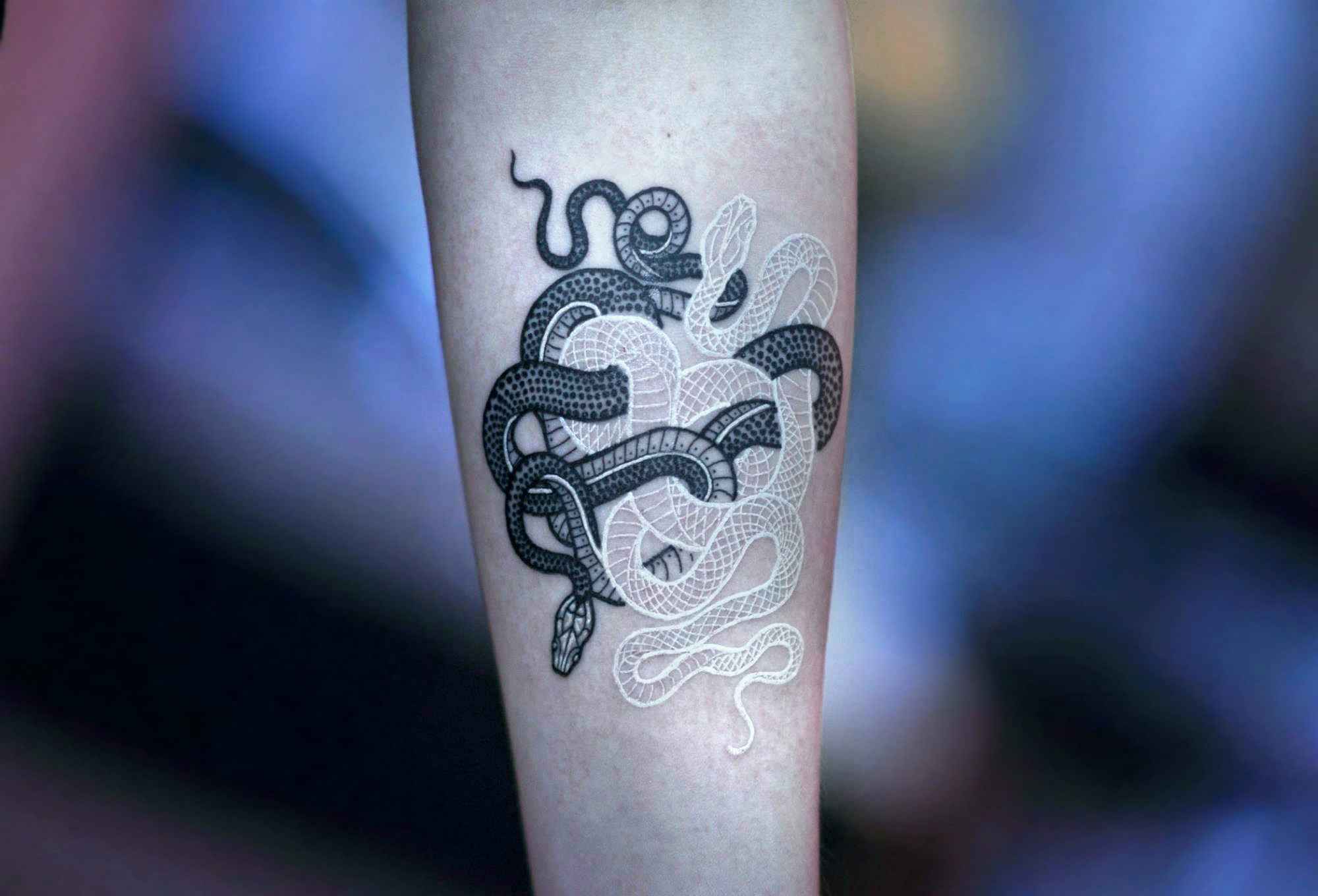
Conclusion
The snake tattoo is a complex and multifaceted symbol that has transcended time and culture. It embodies a rich history, a tapestry of meanings, and an ever-evolving artistic expression. Whether chosen for its symbolism, aesthetics, or personal significance, the snake tattoo continues to be a powerful and enduring form of body art, weaving its way into the fabric of human expression and identity. As the world changes, so too does the meaning of the snake tattoo, adapting to the stories and experiences of each individual who bears it.
Share this content:
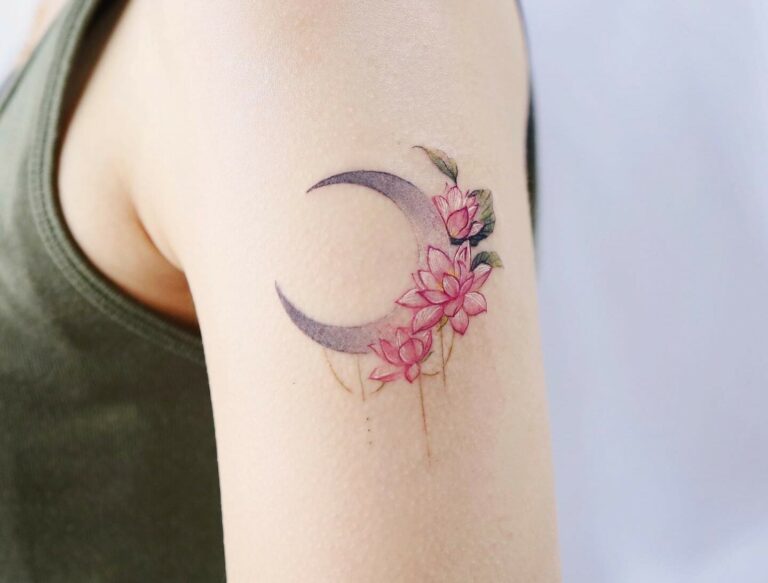

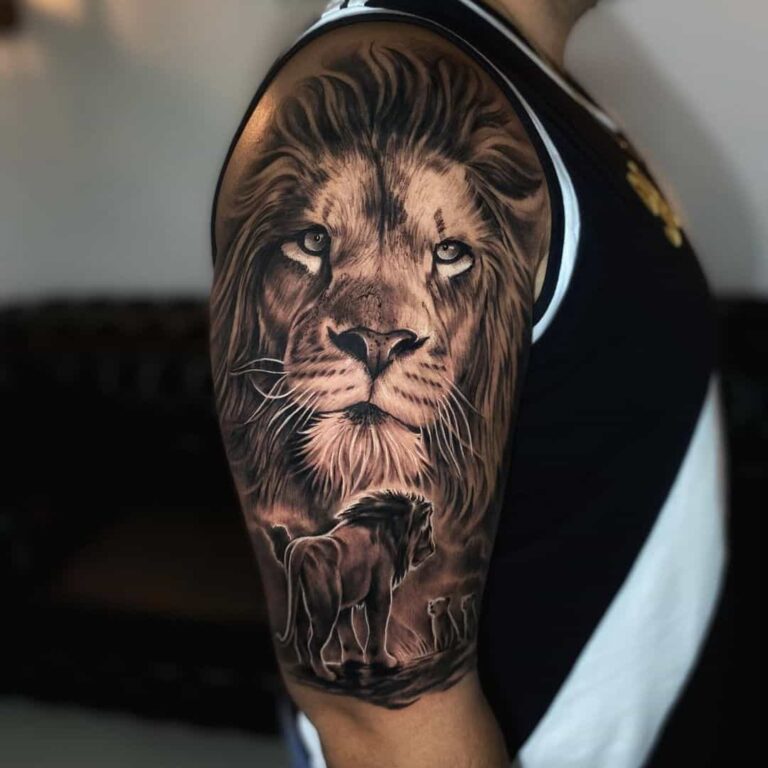










I needs to spend some time learning much more or understanding more.
Snake tattoos are too awesome
Love these tattoos
i like these tattoos
Amazing tattoos.